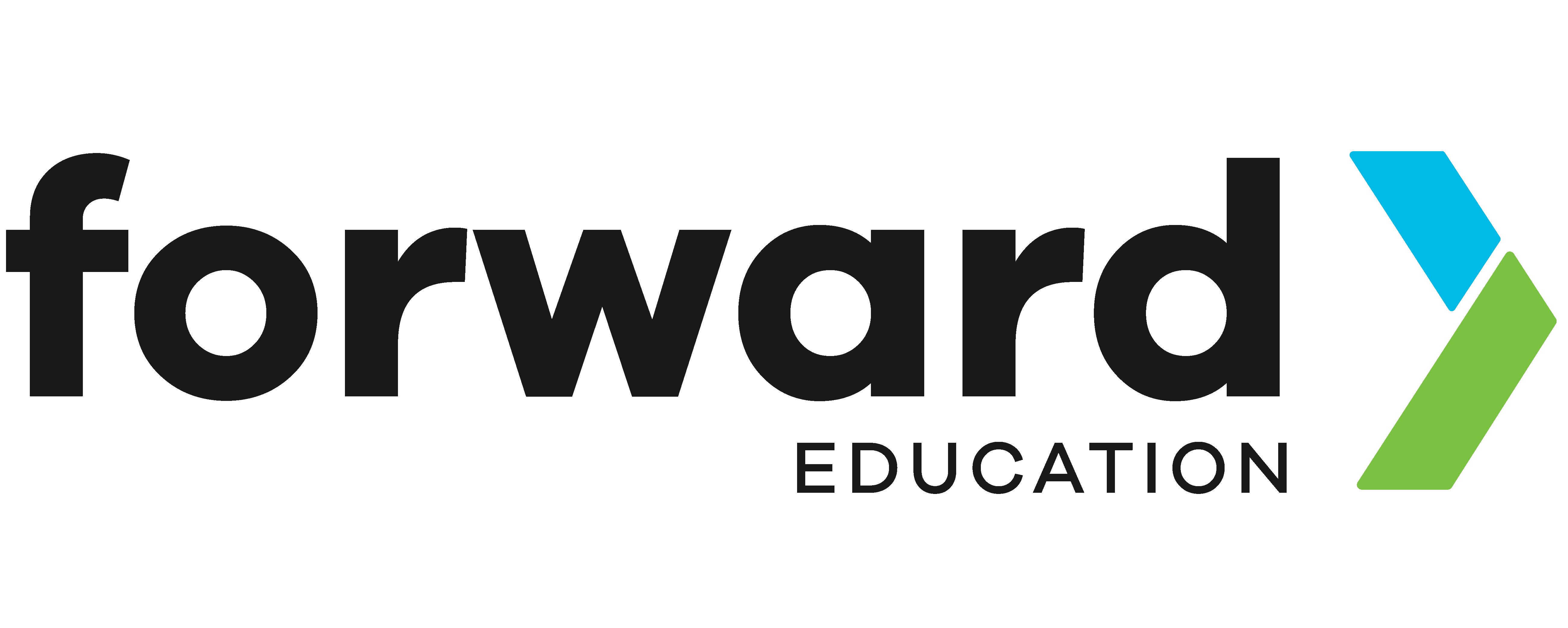Learning Goals Accordion
- Explain how solar panels convert sunlight into electricity
- Define and measure voltage, current, and power generated by a solar panel
- Observe how basic panel movement (sweeping) relates to power output
- Implement an algorithm using variables, loops, functions, and conditionals to control a servo motor for automated sun-tracking
Preparation Accordion
Materials
- Smart Solar Energy Kit
- micro:bit V2
- Computer with access to Microsoft MakeCode
- Flashlight
- Natural light source
- A low-power USB load device, such as Forward Education’s breakout board, a USB light bulb, or a small USB fan
Get to Know the Content
- If it has been a while, review the kit components featured in this lesson:
- Review the lesson, particularly the following thinking routine from Project Zero (Harvard Graduate School of Education):
Activity Accordion
Big Idea (30 minutes)
Students will:
- Engage in a Think-Pair-Share discussion about why some panels move and their potential advantages
- Participate in a hands-on activity to understand the importance of light angle
- Learn about Solar Energy Basics and Key Electrical Concepts (Voltage, Current, Power) using a clear water analogy
- Explore Real-World Solar Tracking Systems and their benefits for clean energy
Take Action (90 minutes)
Students will use the Smart Solar Energy Kit to build a solar panel system that automatically adjusts its position to maintain adequate power.
We've provided 3 ways students may build the project to support scaffolding and differentiation in your classroom: 'Use', 'Modify', and 'Create'.*
| Activity | Description |
|---|---|
| Use |
Students follow a tutorial to set-up and test their sun-tracking solar panel. Success CriteriaI can:
ResourcesTutorialFinal Code |
| Modify |
Students follow a tutorial to set-up their sun-tracking solar panel. Then, they will modify the starter code to adjust sweeping behaviour, as well as add new features such as on-demand power display and an energy-saving sleep mode. Success CriteriaI can:
ResourcesTutorialFinal Code |
| Create |
Students work in small groups to design, build, and code their own sun-tracking solar panel solution. Success CriteriaI can build a solar panel with the Smart Solar Energy Kit that uses at least:
and can:
ResourcesBlank Project |
*Irene Lee, Fred Martin, Jill Denner, Bob Coulter, Walter Allan, Jeri Erickson, Joyce Malyn-Smith, and Linda Werner. 2011. Computational thinking for youth in practice. Acm Inroads 2, 1 (2011), 32–37.
Assessment Accordion
Use the following criteria to assess student learning.
Conversations
- Can students explain how solar panels convert light into electricity?
- Can students define Voltage, Current, and Power?
- Can students identify the components of their solar panel setup and explain their purpose? (Use, Modify, Create)
- Can students describe the sweeping behavior of the panel in different light conditions? (Use, Modify)
- Can students describe the strengths and weaknesses of the basic sweeping algorithm? (Use, Modify)
- Can students justify their design choices and explain how their solar panel meets provided success criteria? (Create)
- Can students explain the real-world relevance of solar tracking for clean energy? (Real-World Example, Use, Modify, Create)
Observations
- Do students effectively follow instructions to set-up the solar panel? (Use, Modify)
- Do students successfully download and run the starter code? (Use, Modify)
- Do students methodically test the panel's behavior in different light conditions? (Use, Modify, Create)
- Do students collaborate effectively in their groups (if applicable)? (Create)
Products
- Students annotate their code to explain how it works. (Use, Modify, Create)
- Students' coded projects effectively demonstrate the expected behavior for their chosen pathway (e.g., functional sweeping, on-demand power display, sleep mode). (Use, Modify, Create)
- Students present their unique solar energy solution. (Create)
Standards Accordion
Next Generation Science Standards
Grade 6-8
MS-PS3-2 Develop a model to describe that when the arrangement of objects interacting at a distance changes, different amounts of potential energy are stored in the system.
MS-ETS1-1 Define the criteria and constraints of a design problem with sufficient precision to ensure a successful solution, taking into account relevant scientific principles and potential impacts on people and the natural environment that may limit possible solutions.
MS-ETS1-2 Evaluate competing design solutions using a systematic process to determine how well they meet the criteria and constraints of the problem.
MS-ETS1-3 Analyze data from tests to determine similarities and differences among several design solutions to identify the best characteristics of each that can be combined into a new solution to better meet the criteria for success.
Computer Science Teachers Association Standards
Grade 6-8
2-CS-01 Recommend improvements to the design of computing devices, based on an analysis of how users interact with the devices.
2-CS-02 Design projects that combine hardware and software components to collect and exchange data.
2-CS-03 Systematically identify and fix problems with computing devices and their components.
2-AP-11 Create clearly named variables that represent different data types and perform operations on their values.
2-AP-12 Design and iteratively develop programs that combine control structures, including nested loops and compound conditionals.
2-AP-14 Create procedures with parameters to organize code and make it easier to reuse.
2-AP-17 Systematically test and refine programs using a range of test cases.
2-AP-19 Document programs in order to make them easier to follow, test, and debug.
Common Core State Standards for Mathematics
Grade 6
6.EE.A.1 Write, read, and evaluate expressions in which letters stand for numbers.
6.EE.B.5 Understand solving an equation or inequality as a process of answering a question: which values from a specified set, if any, make the equation or inequality true? Use substitution to determine whether a given number in a specified set makes an equation or inequality true.
6.EE.B.6 Use variables to represent numbers and write expressions when solving a real-world or mathematical problem; understand that a variable can represent an unknown number, or, depending on the purpose at hand, any number in a specified set.
6.EE.B.7 Solve real-world and mathematical problems by writing and solving equations of the form x + p = q and px = q for cases in which p, q and x are all nonnegative rational numbers.
6.EE.B.8 Write an inequality of the form x > c or x < c to represent a constraint or condition in a real-world or mathematical problem. Recognize that inequalities of the form x > c or x < c have infinitely many solutions; represent solutions of such inequalities on number line diagrams.
6.EE.C.9 Use variables to represent two quantities in a real-world problem that change in relationship to one another; write an equation to express one quantity, thought of as the dependent variable, in terms of the other quantity, thought of as the independent variable. Analyze the relationship between the dependent and independent variables using graphs and tables, and relate these to the equation. For example, in a problem involving motion at constant speed, list and graph ordered pairs of distances and times, and write the equation d = 65t to represent the relationship between distance and time.
Grade 7
7.RP.A.2 Recognize and represent proportional relationships between quantities.
7.NS.A.3 Solve real-world and mathematical problems involving the four operations with rational numbers.
7.EE.B.4 Use variables to represent quantities in a real-world or mathematical problem, and construct simple equations and inequalities to solve problems by reasoning about the quantities.
United Nations Sustainable Development Goals
Common Career Technical Core Standards
STEM Cluster: Engineering & Technology Career Pathway
ST-ET 1.3 Use computer applications to solve problems by creating and using algorithms, and through simulation and modeling techniques.
ST-ET 2.1 Select and use information technology tools to collect, analyze, synthesize and display data to solve problems.
ST-ET 3.1 Use knowledge, techniques, skills and modern tools necessary for engineering practice.
ST-ET 3.2 Describe the elements of good engineering practice (e.g., understanding customer needs, planning requirements analysis, using appropriate engineering tools, prototyping, testing, evaluating and verifying).
ST-ET 3.4 Illustrate the ability to characterize a plan and identify the necessary engineering tools that will produce a technical solution when given a problem statement.
ST-ET 4.1 Explain why and how the contributions of great innovators are important to society.
ST-ET 4.2 Explain the elements and steps of the design process and tools or techniques that can be used for each step.
ST-ET 4.3 Describe design constraints, criteria, and trade-offs in regard to variety of conditions (e.g., technology, cost, safety, society, environment, time, human resources, manufacturability).
ST-ET 5.1 Apply the design process using appropriate modeling and prototyping, testing, verification and implementation techniques.
ST-ET 5.2 Demonstrate the ability to evaluate a design or product and improve the design using testing, modeling and research.
ST-ET 5.3 Demonstrate the ability to record and organize information and test data during design evaluation.
STEM Cluster: Science and Math Career Pathway
ST-SM 1.1 Apply science and mathematics concepts and principles to resolve plans, projects, processes, issues or problems through methods of inquiry.
ST-SM 1.2 Use the skills and abilities in science and mathematics to access, share, and use data to develop plans, processes, projects and solutions.
ST-SM 1.3 Use the skills and abilities in science and mathematics to integrate solutions related to technical or engineering activities using the content and concepts related to the situations.
ST-SM 1.4 Explain the role of modeling in science and engineering.
ST-SM 1.6 Communicate with others on inquiry or resolution of issues/problems in the global community.
ST-SM 2.1 Demonstrate the ability to recognize cause and effect when faced with assigned projects or issues.
ST-SM 2.9 Analyze change as a result of data differences and changing environmental values.
ST-SM 3.1 Evaluate the impact of science on society based on products and processes used in the real world.
ST-SM 3.2 Evaluate the impact of mathematics on society based on products and processes used in the real world.
ST-SM 3.3 Research how science and mathematics influence the professions and occupations supported by the STEM Career Cluster.
Information Technology Cluster: Programming & Software Development Career Pathway
IT-PRG 4.1 Employ tools in developing software applications.
IT-PRG 6.1 Explain programming language concepts.
IT-PRG 6.3 Demonstrate proficiency in developing an application using an appropriate programming language.

